Donald Trump had been booted and Joe Biden has been crowned. The United States has seen a change of its president. Following the footstep of his predecessor, president Biden has continued the tech war against Chinese tech companies. Americans are being banned from investing in Chinese firms, including Huawei, China Mobile and even China General Nuclear Power Corporation.
Biden’s crackdown on dozens of Chinese high-tech companies was taken in addition to keeping Trump’s tariffs on Chinese products. Under the pretext of national security threats to U.S.’ communication networks, Biden has also signed a law that blacklist tech giants like Huawei, ZTE and Hikvision from gaining approval for network equipment licences in the states.
Make no mistake. The war against the Chinese tech companies had nothing to do with allegations that such technologies were used to support China’s military or for mass surveillance of Muslim Uighurs in China’s Xinjiang province. The access restrictions to U.S. exports and the ban on American investment have nothing to do with human rights, let alone national security.
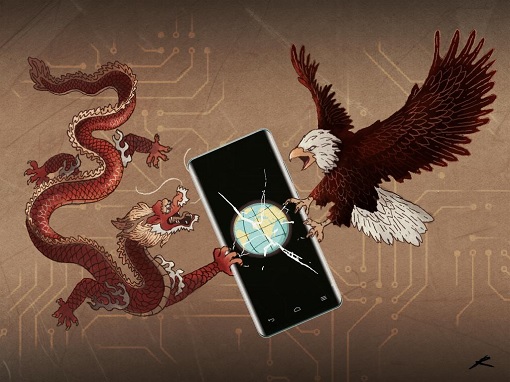
The tech war was purely a global rivalry between the U.S. and China in 5G technology, which saw the Chinese leading the race. China was being suppressed to allow America enough time to play catch up. The various bans, blacklists, sanctions and whatnot were deliberately designed to cripple – and hopefully to stop – the Chinese from becoming the leader in tech power.
In fact, the U.S. was so serious about beating China that the Congress has set aside US$1.9 billion to reimburse network providers to replace wireless equipments made by Huawei and ZTE. However, American providers found out that the allocation was insufficient and have demanded a whopping US$5.6 billion for the cost of replacing the Chinese 5G networking software and hardware.
Yet, almost 4 years since the Trump administration started the trade war (followed by tech war) in 2018, the U.S. appears to be still far behind China in the 5G race. Former Google CEO Eric Schmidt said America is “far behind in almost every dimension of 5G while other nations – including China – race ahead, and unless the U.S. make 5G a ‘national priority’, China will own the 5G future”.

It’s not hard to find proof that the U.S. is left behind, despite having had the edge in tech for as long as one can remember. Apple has introduced its first 5G iPhone since the tech war started. AT&T, T-Mobile and Verizon are all offering 5G coverage. Hundreds of millions of Americans are enjoying 5G connectivity. But speed-wise, is the 5G in the U.S. really the 5th generation wireless internet?
American users might think they were connected to the super-fast 5G just because they owned a 5G smartphone. Network providers like AT&T and Verizon also repeatedly advertise about the wonders of their 5G service. In truth, however, the 5G speed in the U.S. is pathetically slow – averaging 75 megabits per second compared to China’s 300 megabits per second.
Why is speed important? Schmidt and Graham Allison, a professor at Harvard, said – “Mobile internet speed is a central advancement of 5G, which enables a new domain of breakthrough applications. The step up to real 5G speeds will lead to analogous breakthroughs in autonomous vehicles, virtual-reality applications like the metaverse, and other areas that have yet to be invented”.
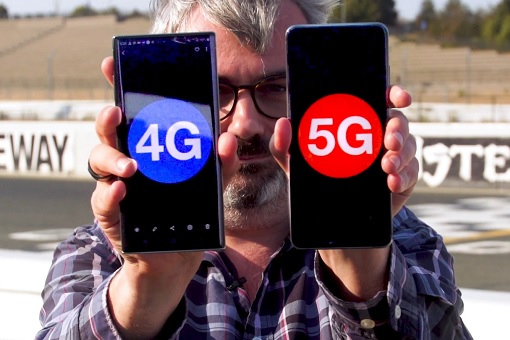
Apparently, the so-called 5G in the U.S. is using the same spectrum band for the old 4G networks. Because the 4G and 5G networks in the U.S. are sharing the same spectrum, the 5G speed (if indeed it was genuine 5G in the first place) is limited. It was like driving a Porsche on an expressway with 60 kilometre-per-hour speed limit. In essence, 5G in the U.S. is 4G, but decorated as 5G.
Worse, in some U.S. cities like Washington and Los Angeles, the 5G speed is so pathetic that it is at least 20% slower than the previous old 4G networks. China, on the other hand, is allocating the most efficient part of the spectrum – “midband” – to 5G service providers. It was like the Chinese built 3 times more new highways while the Americans reuse the same old infrastructure.
Technically, 5G uses millimetre waves, which are a lot shorter than the 4G’s wavelengths. The shorter wavelengths that 5G signals use allow it to carry not only more data, but also at a faster speed than 4G. To ensure a reliable 5G signal, tonnes of 5G cell towers and antennas are required. The U.S. has built only 100,000 5G base stations, but China has 1.3 million (as of Dec 2021).
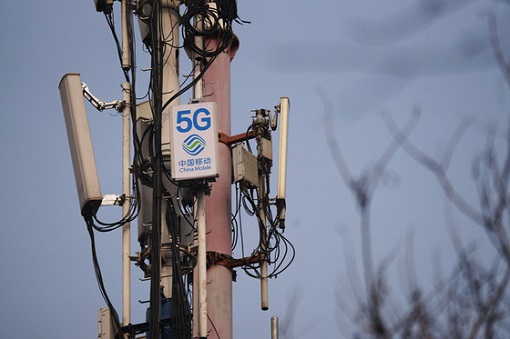
When Senate Majority Leader Chuck Schumer praised the country’s Innovation and Competition Act, which was allocated US$1.5 billion to roll out 5G mobile networks through 2026, little did he realize that China has already spent US$50 billion to build its 5G networks. In fact, the Chinese government plans to splash US$100 billion on 5G in the next 5 years.
To make matters worse, Schmidt and Allison also said that Huawei, China’s biggest telecommunications equipment maker, still dominates the market “although American sanctions have hurt Huawei”. Chinese companies had supplied 5G infrastructure to at least 30% global market. On the other hand, not a single American company sells any 5G equipment overseas.
The global 5G service market size is projected to reach a jaw-dropping US$664.75 billion by 2028, providing mouth-watering business opportunity in China. According to analyst Stefan Pongratz from Dell’Oro, Huawei still dominates the global market with its market share as large as Ericsson and Nokia combined. While Huawei leads with a 29% market share, fellow ZTE is at the 4th spot (11% share).
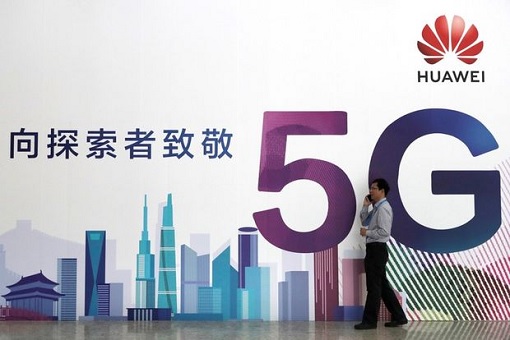
So, even though Huawei’s global smartphone shipments had plunged due to U.S.’ vigorous attacks, its dominance in the 5G market is still unshakeable. As the U.S. proudly markets its 5G services (with slower speed than 4G), countries like Russia, Saudi Arabia, UAE, Iceland, Hungary, Netherlands, South Africa and Turkey have installed Huawei infrastructure and are already using it to deliver 5G services.
Hilariously, as the U.S. was struggling to deploy its own 5G while at the same time trying to give a hard time to China, Huawei has begun working on 6G (50 times faster than 5G) as early as September 2019. Last month (Jan 2022), government-backed Purple Mountain Laboratories revealed that its 6G research managed to hit wireless transmission speed up to 206.25 gigabits-per-second – a world record.
Even ZTE is still alive and kicking, despite the U.S. relentless attacks. Its net profit for 2021 was projected to be between RMB 6.5 billion and RMB 7.2 billion – an increase of 52.6% to 69% year-on-year. In 2021 alone, the three major mobile operators in China have a combined 729.5 million 5G subscribers, more than double the number at end-2020.
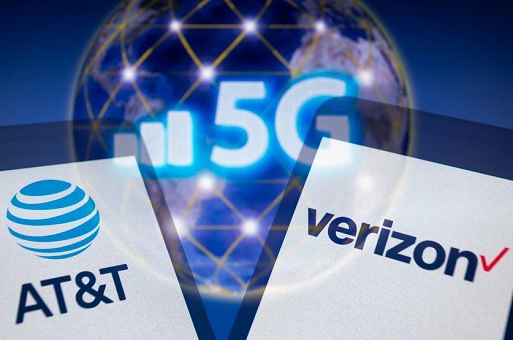
Perhaps the U.S. politicians did not realize that America’s rollout of 5G is a chicken-and-egg problem. Until there are business justification or demands for 5G networks, service providers are slow to spend billions of dollars building antennas and towers. Therefore, even though the so-called 5G has arrived since 2020, the speeds are too slow in most areas even till today.
No wonder AT&T says 5G means “improved speed” and T-Mobile says “faster speed”. Allison and Schmidt said – “The pathetic U.S. performance in the 5G race is a sign of America’s larger failure to keep up with China on strategically important technologies. On current trajectories, by 2030, it will likely lead the U.S. in the number of semiconductor chips it produces and in applications of biotechnology to defeat diseases like cancer”.
Other Articles That May Interest You …
- How TikTok Erased $250 Billion From Facebook In 1 Day – The Biggest Wipeout In Stock Market History
- Trump To Cut Off Chip Supplies To Huawei – But The Chinese Tech Giant Has Begun Making Phones With Local Chipmaker
- China No Longer Needs U.S. Parts – Huawei Mate 30 Contains Zero American Chips
- It’s OK To Share 5G Technology With The U.S. – Because Huawei Has Already Begun Working On 6G
- Economists Thought China’s Economy Depends On The World – But McKinsey Research Shows Otherwise
- From Trade War To Tech War – After 5G Technology, The US Aims To Cripple China’s Artificial Intelligence
- As Huawei Hits $100 Billion Revenue, Chairman Said The U.S. Has “Loser’s Attitude” & “Table Manners” Problem
- “You Cannot Crush Us” – Huawei Founder Warned About Shifting Investment From The U.S. To U.K.
- Huawei Strikes Back – U.S. Fears Of Being Left Behind, Fails To Hack Into Huawei To Spy
- From Trade War To Political Kidnapping – Two Canadians Held “Hostage” As China Retaliates
- China Invasion – Top 10 American Iconic Brands Now Owned By Chinese

|
|
February 18th, 2022 by financetwitter
|


|

|

|

|

|

|




























Comments
Add your comment now.
Leave a Reply